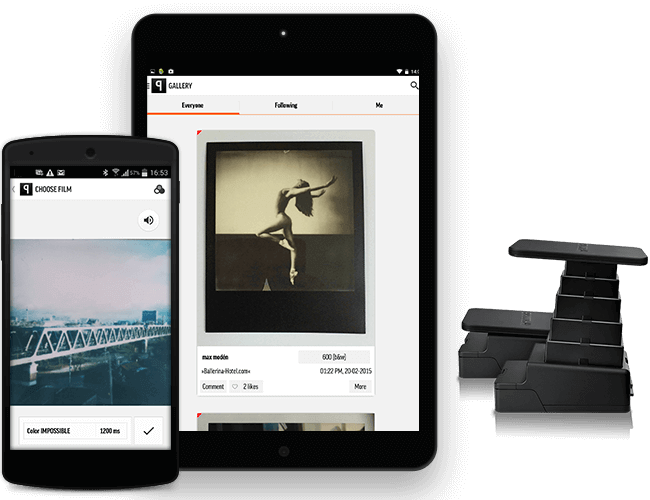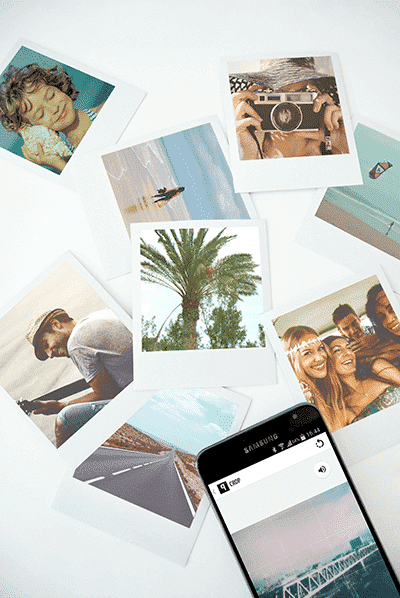Impossible Project Instant Lab

Service
Development
Technology
Android
Client
Impossible Camera GmbH
Year
2014 – 2017
What was Karlmax’s role in the project?
The hardware and an iOS version had been on the market for some years. We took over a somewhat finished version and then developed it for Android for the Play Store.
Why does the user need the app?
Because the Polaroid style is simply unique.
What can the app do?
Impossible Project Instant Lab is an app that lets you turn digital smartphone photos into classic Polaroids. Werner Herzog himself leads you through the steps of a simple process to a perfect instant picture with the Instant Lab. The results can then be uploaded and shared. The Instant Lab is a combination of a Polaroid laboratory, a special scanner, and a holder for smartphones.

The challenge
We climbed aboard with the project in a peak phase, with part of the development already finished. It’s always a special kind of a task to take over a running project, where you have to reach a predetermined goal with code that you haven’t written yourself. Our greatest challenge was very clearly the implementation of the lighting process for large photos, with great variations in both light and resolution, for Android devices. With iPhones it’s been possible to sell one hard shell to hold the phone above the Instant Lab, and that shell worked with iPhones 3, 4, 5 and 5s. But unfortunately the same couldn’t be said of Android, with its some 8,000 different Android devices around of all shapes and sizes.
How did we proceed?
In theory, the definition of the lighting area with the help of three points creates a simple equation. But in practice we came up against unexpected obstacles. Is it possible that a lot of telephones don’t actually know how big their screens are? How can we tell if a telephone has slipped slightly in its tapered holder? How does one give the user proper feedback as to when and how the telephone needs to lie on the display?
These were all questions that we had to answer before the app was really shop-ready, meaning we had to set up some prototypes. On one side the user is directed by the app to make sure that the telephone is correctly positioned, voiced over by the soothing tones of Werner Herzog. On the other side we got the telephone to measure itself: Through the hardware we could identify at least three fixed points and their distance to each other. In this way we were able to scale the picture enough that it was possible to create a decent Polaroid copy.

Behind the scenes or: Why a Panini grill belongs in the armoury of the Polaroid project developer
In order to test the most important colour components of the black and white photography (in essence they needed to be pulled into the red light spectrum in order to not appear too pale), we had to make absolutely endless light rows. And warmth helps the Polaroid to develop more quickly. After a few attempts to speed up the warming process either manually or through friction, we decided on a run-through with a Panini grill. And there it was: In an impressively short amount of time the picture was developed. So remember: even a Panini grill has more than one function – and Polaroids like it warm (to hot).








